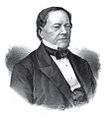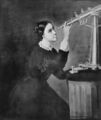Template:Selected anniversaries/September 23: Difference between revisions
No edit summary |
No edit summary |
||
| Line 1: | Line 1: | ||
<gallery> | <gallery> | ||
File:Hermann_der_Lahme.gif|link=Hermann of Reichenau (nonfiction)|1044: Composer, mathematician, astronomer, and [[Gnomon algorithm]] theorist [[Hermann of Reichenau (nonfiction)|Hermann of Reichenau]] uses an improvised astrolabe to defeat his rival [[Anarchimedes]] in single combat. | |||
||1596: Joan Blaeu born ... cartographer born in Alkmaar, the son of cartographer Willem Blaeu. Pic. | ||1596: Joan Blaeu born ... cartographer born in Alkmaar, the son of cartographer Willem Blaeu. Pic. | ||
Revision as of 18:19, 24 September 2018
1044: Composer, mathematician, astronomer, and Gnomon algorithm theorist Hermann of Reichenau uses an improvised astrolabe to defeat his rival Anarchimedes in single combat.
1785: Lawyer, translator, and inventor Per Georg Scheutz born. He will invent the Scheutzian calculation engine, based on Charles Babbage's difference engine.
1877: Mathematician and astronomer Urbain Le Verrier dies. He predicted the existence and position of Neptune using only mathematics, an event widely regarded as one of the most remarkable moments of 19th century science.
1878: Astronomer and crime-fighter Maria Mitchell publishes new class of Gnomon algorithm functions which predict and prevent astronomical crimes against mathematical constants.
1884: Patent filed for Herman Hollerith's tabulating machine. Hollerith's machines will be used in the 1890 US Census and in 1924 he and others will form the company that will become IBM.
1915: Physicist and academic Clifford Shull born. He will share the 1994 Nobel Prize in Physics with Bertram Brockhouse for the development of the neutron scattering technique.
1938: Mathematician and engineer Philbert Maurice d’Ocagne dies. He founded the field of nomography, the graphic computation of algebraic equations, on charts which he called nomograms.
2018: Steganographic analysis of Violet Spiral 2 unexpectedly reveals "between seven hundred and eight hundred kilobytes" of previously unknown Gnomon algorithm-based nomograms.







